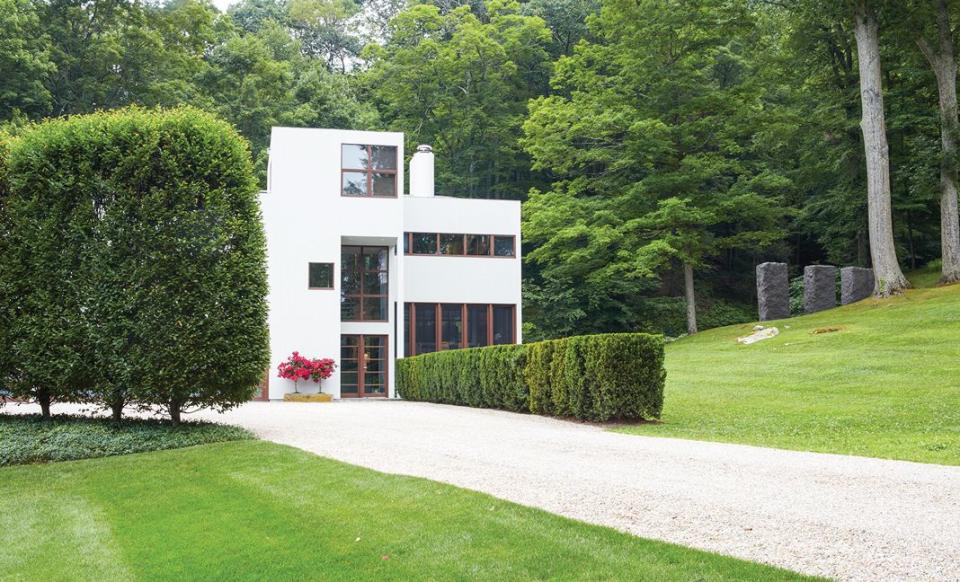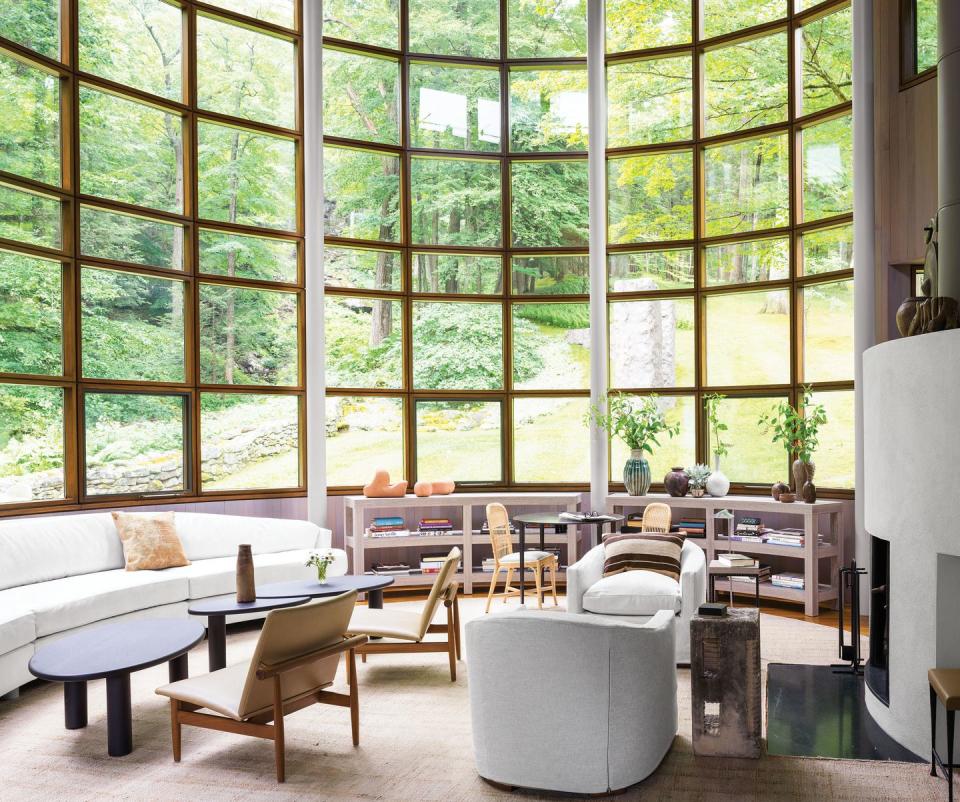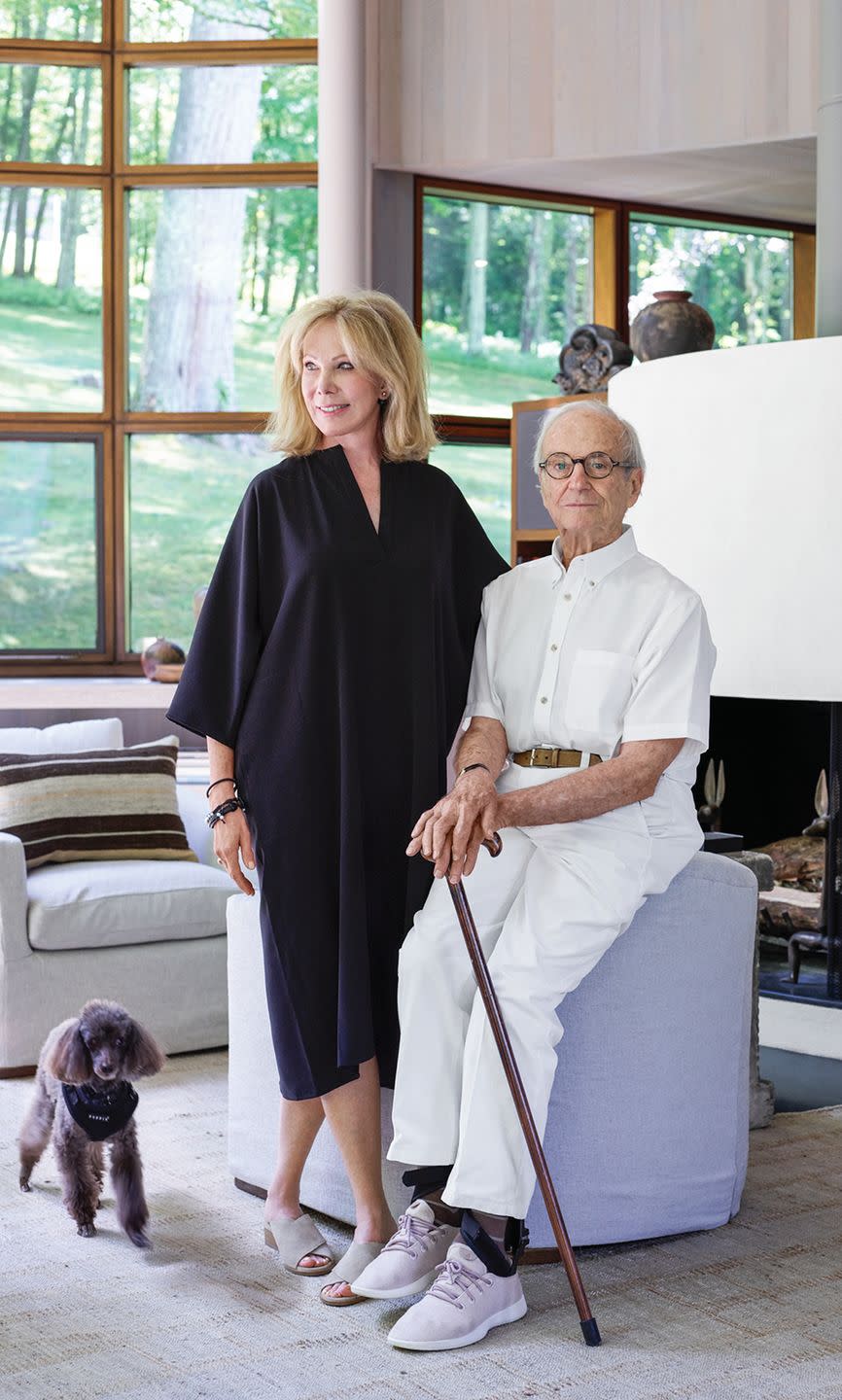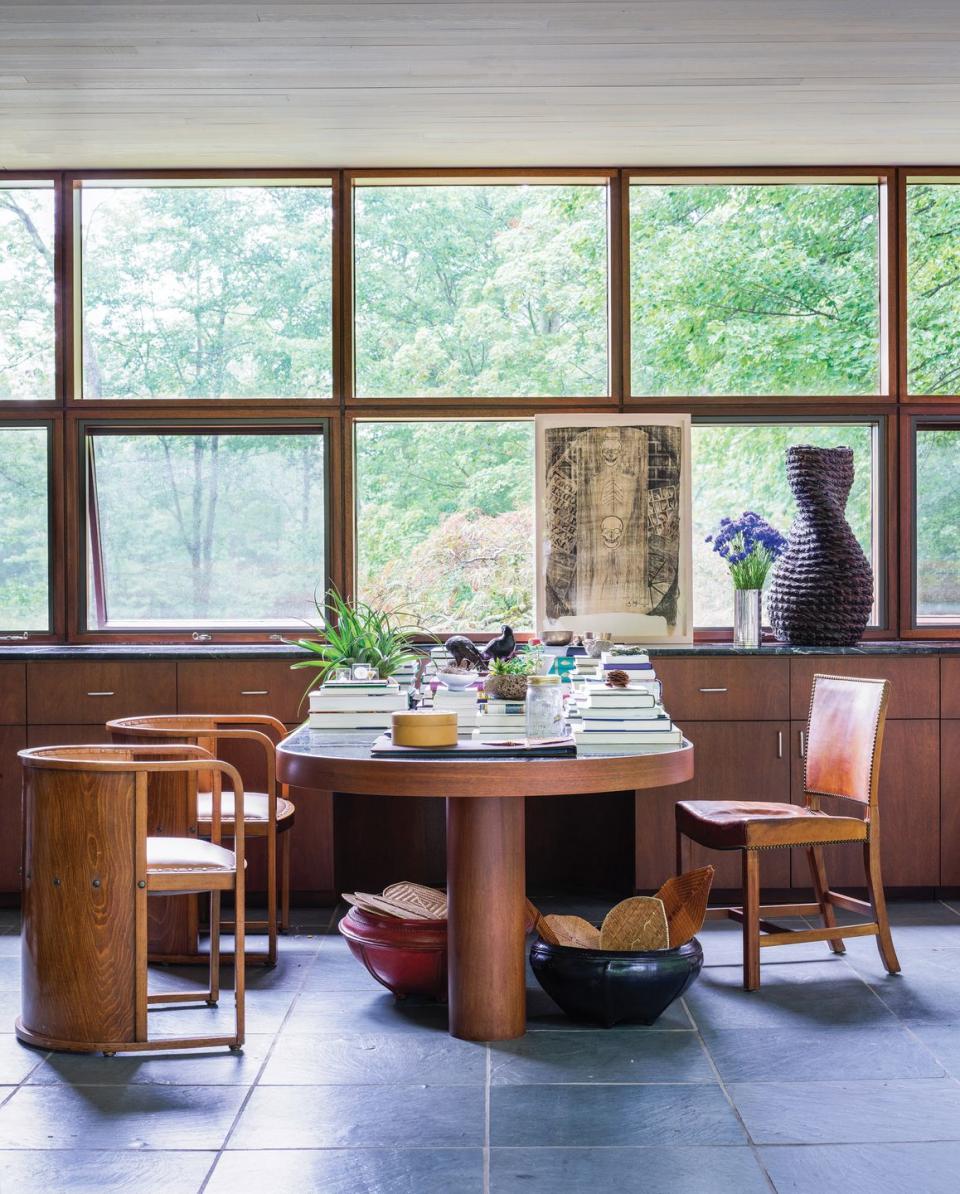What Happens When a Top Designer Follows the Lines of a Great Architect?


Remember the Met Costume Institute show “Schiaparelli and Prada: Impossible Conversations”? This story is like that: a conversation, but about a house, not clothes.
Like the one at the Met, our conversation is conducted across time. It takes place between two preeminent designers—a decorator and an architect, one living and one no longer—deep in the Connecticut woods. If we listen closely we will learn things we didn’t know about both.

The participants are Stephen Sills, who sits at the top of the interior design world, and Charles Gwathmey, one of America’s greatest architects from his explosion on the scene in 1965 up to his death, too soon, in 2009. The site, which does so much to shape the house, is a secluded 40-plus acres (around eight of which are under the control of landscape designer Deborah Nevins) near the town of Kent; it has its own waterfall.
Sills and Gwathmey are talking to each other through the medium of this house, but they also have a message for us about the potential for the modernist architecture of a different era to express a humanistic side, a connection with nature—and about what some decoration of our own can add to this story.

The reason any of this is happening is the great patronage on the part of the owners, Ben and Donna Rosen. Ben is chairman emeritus at Compaq, Donna a former gallerist who is now a trustee of the Whitney Museum of American Art. They are philanthropists and art collectors. They are young in mentality and personal style.

Both are from New Orleans, though Donna carries much more of the South with her today. They love Litchfield County, but they had sort of accepted, after a long search that included Bill Blass’s property, that they would never find anything of suitably modern architectural character there. Then in 2002, when a real estate broker said, “You don’t like the Gwathmey house with the waterfall?,” they realized no one had shown them the one house they might have built if it didn’t already exist. Donna and Ben went right over; they didn’t even get down the driveway before falling in love.
“What I love about this house is that it’s based on New England architecture,” Donna says. “Gwathmey’s work, especially the smaller houses like this one, has a sculptural quality, like an Amish barn. When it goes up in scale, something is lost.”
Enter Sills, a friend who had done the couple’s New York apartment. For a decorator, Sills operates with a deep knowledge of architecture, and he is passionate about the kind of modernism, rooted in early-20th-century Vienna and Le Corbusier, that this building (and everything Gwathmey did) is about. He was an admirer of Gwathmey’s, having worked with him early in his career on an apartment for New York entrepreneurs Nan and Stephen Swid. “I was worried that a famous architect was going to be really offended at this no-name decorator from Oklahoma wanting to redo everything,” Sills recalls. “But he couldn’t have been more charming.”

The Falls, as the Rosens’ house is known, has had only one other owner since it was built in 1983. “When I went up to see it,” Sills says, “I realized what a jewel the house was. The way Charlie placed it on the property and focused this round room up to a natural waterfall was brilliant. I said, ‘Donna, I want to do that house.’”
He went to the property one afternoon and sketched his plans out in less than an hour. “The vocabulary was already set up by the great architecture,” he says. “You just had to follow it.”

What Sills means by “follow it” is antithetical to the way most buildings of this school of modernism have been finished inside. “The big mistake in Gwathmey houses is that people put in angular furniture, which is the wrong note because the architecture is angular,” he says. His instinct for decorating the round room was to use beautiful lines, some curves, and softness. “I started with that big kidney-shaped sofa facing inward toward the fireplace, and the rest of the furniture looking out to the view,” he says. “Most important was that everything be at eye level with that curved wall.”

Lightness and sensuality arrive in the form of a pair of Italian wicker chairs, something surprising in a Gwathmey environment but not unusual for Sills. The appearance of wicker front and center in the living room was a secret tool used by Marella Agnelli to add informality to palatial interiors, and Tom Scheerer does the same thing today. “Well, it’s in the country,” Sills says, irritated by too much analysis. But I suspect he knows that these innocent chairs, with their backdrop of green, are necessary to secure, in one gesture, the slightly Japanese connection with nature that runs through this house.
What would the architect think? Sills’s experience notwithstanding, Gwathmey was known to be hard on decorators. I worked on a project with him and found this to be the case. He was interested in purity and wanted maximum control over the result. For this reason many Gwathmey projects have not aged as well as they might have. The interiors have had a tendency to date faster than the sculptural forms of the architecture, which obscures his buildings’ excellence.

Every Impossible Conversation should have a surprise ending, and ours will be the voice of architect Will Meyer, a protégé of Gwathmey’s. “He was as rigorous a modernist as there ever was, and he doesn’t get the credit he deserves today,” Meyer says. “There aren’t architects like him anymore. He cared about details and design more than anyone.”
Sills, who may be the only decorator Gwathmey ever liked, is just as generous and even more concise: “He was exceptionally gifted.”
This story appears in the March 2020 issue of Town & Country. SUBSCRIBE NOW
You Might Also Like

